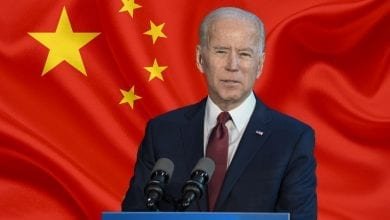Latest data shows economy in recession with stagflation
The first estimate for GDP growth in the second quarter of this year, will be available on July 28. If that number is negative, then the economy will be in a recession since the first quarter number was also negative. Based on the most recently released data, it looks like the economy is in recession. Worse, since inflation is running at a 40-year high, the economy is experiencing stagflation too.
Technically, it is the National Bureau of Economic Research (NBER) that officially declares a recession based on additional factors, like the unemployment rate. The NBER will likely say that even though we had two successive quarters of negative growth, the economy is not actually in recession.
They will argue that since the unemployment rate is below 4%, usually considered a full employment level, a recession is not yet here. The reality is that during this recession, the unemployment rate will stay below historical precedent.
That’s because after the pandemic ended, the labor force participation rate remained below the pre-pandemic level. Since the economy did grow by nearly 6% last year, business currently has 11 million open jobs, while there are less than 6 million unemployed workers.
During this recession we will see fewer layoffs than is typically seen, but the number of open jobs will fall dramatically. Nonetheless when national output is declining for six months or more the economy is in recession, regardless of what a government agency may say.
Normally during recession, the decrease in total demand puts downward pressure on price and inflation falls to well below 3%. Today inflation is 8.6%. The Consumer Price Index for June will be released on July 13. It will likely show another large increase, probably in the .8% to 1.0% range. In May the CPI increased by 1%.
That will raise the 12-month inflation rate to nearly 9%. Even if a recession is not declared, with high inflation and an economy that is not growing (stagnant) we have stagflation.
Recently released data for May, shows consumer spending, after adjusting for inflation, decreased. Since consumer spending accounts for nearly 70% of GDP, the decline is worrisome. Manufacturing output also declined. The automobile industry, in particular, saw a whopping 12.6% drop in sales.
The Federal Reserve Bank of Atlanta is currently forecasting that GDP will decline by 2.5% in the second quarter, although most economists are still forecasting positive growth.
Last quarter the economy saw productivity decline by 7.5%. That made a large contribution to the -1.6% annual growth rate. At this point, it is difficult to exactly determine why productivity fell. One explanation says there were two primary causes.
During the lockdown in 2020, millions of workers were forced to work remotely usually from home. During that time many industries saw productivity increases, likely because workers saved travel time and perhaps some other factors related to interactions in the office. These workers are now returning to the office. It is possible that some workers are less productive in the office.
Also, business is having a very difficult time recruiting new workers, mostly because the government has been paying people not to work. As these long term unemployed workers finally return to the workforce, the skills they have are very rusty so it may take some time for them to contribute.
If productivity remains negative, the decline in GDP for the second quarter could exceed the Atlanta Fed’s forecast.
Although at least a year late, the Federal Reserve has finally determined that it must set inflation reduction as its primary goal. As such they will raise interest rates another 75 basis points when they meet in mid-July. Since inflation will continue to be way above the Fed’s target throughout the rest of the year, they will have to raise interest rates two or three more times. That will worsen the recession.
President Biden’s policies which reduced the supply of energy coupled with his continued huge deficit spending are the major causes of inflation. The Fed’s expansionary monetary policy which rapidly grew the money supply and kept interest rates near zero all through 2021 and into early 2022, also made a large contribution to inflation.
Contrary to what the President says, the current inflation problem has little to do with Russia, since Russia is now selling more energy than before the invasion of Ukraine.
As I noted in my Newsmax column in April 2021 inflation would be a major problem in 2022. As I also noted in my Newsmax column in May of this year, both recession and stagflation are indeed inevitable. By the end of this month, the data will show both are here.
Agree/Disagree with the author(s)? Let them know in the comments below and be heard by 10’s of thousands of CDN readers each day!



